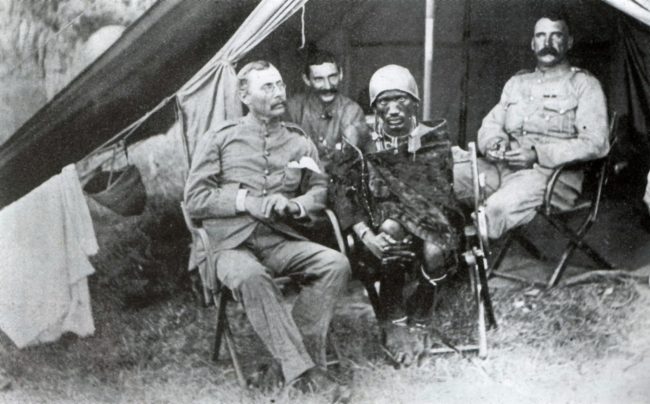It is often said that the real worth of a man is not measured by what he does when he is alive but what he leaves behind when he dies.
Historical records are stained with horrid stories of massacres and unjust killings of innocent civilians all around the world. Of all these stories, one incident particularly stands out as a tragic story with an unusual, yet amiable outcome. Never before had a massacre struck a friendship between two warring parties. But men are often unpredictable and sometimes novel in their ways.
This is the story of The Kedong massacre which occurred in Kedong Valley (Rift Valley Kenya ).Little is known about this massacre and how it played a role in strengthening the bond between the Masai and the British colonialists.
The Maasai had posed the greatest risk of native opposition to British occupation in East Africa and the British had considered them the most warlike if not barbaric tribe in the region. One may wonder, how they ended up collaborating or even why they did so in the first place. Though debatable, answers to these questions lie in a series of events that forced this regal tribe to submit to the will of an unwelcome stranger.
November 26th 1895
..in the Kedong valley, a large caravan consisting of 105 Swahilis including 50 armed men and 1,200 Kikuyu porters was camped near Kijabe on their way from Eldama Ravine to Kikuyu. The Swahili chief headman of the caravan ordered some of his armed men to raid a nearby Masai village and seize two young girls for his use. The girls were seized and brought to the camp. They were quickly followed by a group of Morans who forcefully demanded and by so doing facilitated their release.
The next morning while passing the village, the Swahili headman once again ordered the seizure of two Masai girls. In the resultant struggle, a gun went off. To the already greatly provoked Morans this was undoubtedly a call for war. The war-cry rang out from the village and was echoed from other nearby villages. That night the caravan and it’s arrogant, instigating headmen was at the mercy of the Morans. The death toll was almost interminable
2 Swahili headmen
13 armed and 85 unarmed Swahili porters
546 Kikuyu
The Masai losses stood at less than 40 killed.Shortly after the massacre, Andrew Dick an English trader on his way to Uganda came upon the scene. Mr T.T.Gilkison (officer in charge of Fort Smith at Kikuyu) had heard about the disaster and sent out a force of police to escort Dick and company back to the fort. Dick was in the company of 3 French travelers who had just come from a shooting expedition. Without finding out the cause of the massacre, Dick decided to attack the Masai with the reluctant aid of the three Frenchmen. Dick opened fire and almost single handedly killed over 100 Morans. Together this traveling band of misfits, they also captured 200 heads of cattle from the Masai but Dick lost his own life through his reckless folly and the jamming of his riffle at a critical moment.
At the time of Dick’s death Lenana (who had been proclaimed Chief Laibon of the Masai people after the death of Mbatian in 1890) was on a visit to Fort Smith along with other Masai leaders. Here they were detained until they had a meeting with Mr. John Ainsworth.
During the meeting it was agreed that the Morans were justified in reacting to the provocation of the Swahili headmen and company. It was also agreed that Dick’s actions were unwarranted and he had no right to open fire. As a result the Masai were not going to be punished. But they were however supposed to return all arms and property stolen from the caravan and the cattle that was taken from them was distributed among the families of the Kikuyu porters who were killed.
It is important to note that between the years 1880 and 1890 Rinderpest had led to the severe loss of the tribe’s cattle and to top it all off there was great famine and an outbreak of smallpox during this same period. All these catastrophic events left the once united, inviolable tribe in piteous straits. The massacre incident practically marked the beginning of Lenana’s friendship and loyalty to the government.
Whether Lenana’s collaboration was seen as a desolation of independence or a heroic act to save a weakened tribe, the truth of the matter remains that, it played a huge rule in shaping history as we know it today. And very well left us with this divergent story to tell.
This essay is part of the Save the railway project that aims to create public awareness on the Kenya-Uganda railway and the huge role it played in shaping Kenya as we know it today. It also aims to sensitize the need and urgency to preserve and rehabilitate railway stations within the country. Railway stations which are currently wasting away and risk being completely forgotten if nothing is done to preserve them. Find out more about the project here ~> theeagora.com


